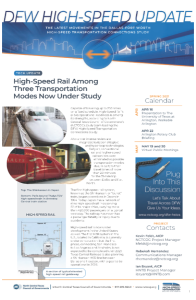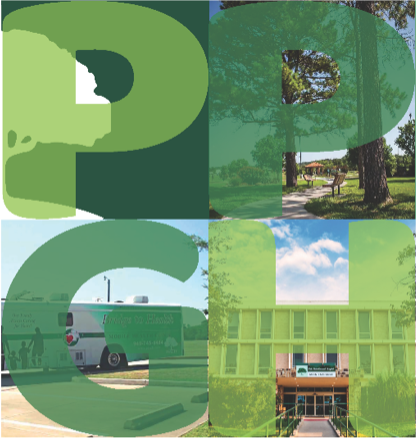Case Studies
GOALS AND ASPIRATIONS ARE REACHED WITH CAREFUL PLANNING. WHILE MOST OF OUR CLIENTS PREFER THAT WE NOT MAKE PUBLIC OUR WORK WITH THEM, HERE ARE A FEW CASE STUDIES THAT WE ARE PROUD OF.
Joint Land Use Studies

A JLUS is a planning process accomplished through the collaborative efforts of a comprehensive list of stakeholders in a defined study area. Collaboration and joint planning among military installations, local communities, and agencies occur to protect the long-term viability of existing and future military missions. Working together also enhances the health of economies and industries of the communities before incompatibility becomes an issue. Recognizing the close relationship that should exist between installations and adjacent communities, the Department of Defense (DOD), Office of Economic Adjustment (OEA) implemented the Compatible Use program to help mitigate existing and future conflicts and to enhance coordination/communication among all stakeholders.
Joint Land Use Studies (JLUS) are community-driven, cooperative, strategic planning processes among localities, states, and military installations. The goal of each JLUS is to encourage local governments to work closely with the military installations to implement measures that prevent the introduction of incompatible civilian development that may impair the continued operational utility of the military installation and to preserve and protect the public health, safety, and welfare of those living near an active military installation. JLUS typically:
- Protect property rights and control within the JLUS Study Area
- Protect current and future operational and training missions at military installations
- Create a locally relevant document that builds consensus and obtains support from the various stakeholders involved, including local community, state, and federal officials, residents, and the military.
Naval Air Station Joint Reserve Base Joint Land Use Study Sponsored by the North Central Texas Council of Governments DFW Advisors and Pavlik and Associates – 2007 The North Central Texas Council of Governments (NCTCOG) was the sponsor for a Joint Land Use Study (JLUS) for Naval Air Station/Joint Reserve Base in Fort Worth, Texas (2007-2008). The planning program for the project encompassed six cities (including Fort Worth) and Tarrant County. Pavlik was responsible for all public engagement and community consensus building and was Editor-in-chief of all reports generated during the study.
The Association of Central Oklahoma Governments (ACOG) was the sponsor for the Tinker Air Force Base Joint Land Use Study The base is approximately 5,000 acres with Oklahoma and Cleveland Counties, the State of Oklahoma and six cities (Midwest City, Oklahoma City, Del City, Spencer, Choctaw, and Nicoma Park) having jurisdiction surrounding the base. The scope of work required an assessment of each jurisdiction’s Comprehensive Plans, Zoning Ordinances, and Subdivision Regulations. An extensive public outreach program was developed and employed.
Linda Pavlik was one of three study leaders, managing all public engagement, outreach to elected officials and economic development entities, and the news media. She was responsible for scheduling all meetings and the design and production of collateral materials as well as being Editor-in-Chief of all reports the study generated.
City of Cedar Hill

August 2018 –May 2019
The team developed and executed an inclusive, responsive, and significant creative engagement plan that also communicated the purpose and importance of the project. The foundation of the strategy was Pavlik’s deep understanding of local culture, an expertise that can only come from decades of working on the ground in urban areas throughout Texas.
The engagement was strengthened by Pavlik’s focus on hyperlocal collaboration—listening to the community to identify the engagement methods that would be most successful in Cedar Hill. By prioritizing relationships and trust, the team successfully rallied local community leaders around the study and worked through their established networks to maximize community input. The plan strategically targeted and effectively engaged a diverse group of stakeholders with a variety of visions for the future of this historic area, including individuals who were either unable or unwilling to participate in previous planning efforts.
Pavlik’s responsibilities included planning and scoping public engagement activities, leading stakeholder meetings, facilitating focus groups, conducting surveys, developing consistent and fact-based messaging, preparing presentation materials, implementing virtual engagement (social media platforms, online surveys, and web-based mapping tools), analyzing data, reporting, and fine tuning project recommendations with findings received during the planning process.
City of Cleburne

2013–2014
The Cleburne Downtown Master Plan addressed the long-term needs of this important area of the community in the context of local and regional growth for Cleburne and Johnson County. It provided a roadmap for redevelopment in such a way that Downtown is pedestrian-friendly, aesthetically pleasing, and, most importantly, economically thriving.
The Redevelopment Plan resulted from extensive research and collaboration and involved the North Central Texas Council of Governments (NCTCOG) and the City of Cleburne led by a team of planning consultants. Also engaged were representatives of the Texas Department of Transportation (TxDOT), Johnson County, Cleburne Chamber of Commerce, Downtown Cleburne Association, Friends of the Cultural Arts, Save Old Cleburne, and Keep Cleburne Beautiful. The Project Review Committee (PRC) included representatives of the City, TxDOT, and NCTCOG.
Key components of the planning process were: (1) an analysis of existing conditions including Downtown’s character, transportation, land use, zoning, cultural offerings, natural features, and economics; (2) public engagement including stakeholder interviews, public meetings, and visioning workshops, and (3) case studies about downtowns with similar geography, circumstances, and goals.
Pavlik and Associate’s engagement of community stakeholders revealed the biggest priorities were increasing ease of pedestrian travel, improving area aesthetics, and revitalizing community/green spaces. Alternative planning scenarios or “Gravity Centers” were identified for future private investment to further facilitate proximal growth. Regulatory solutions to stimulating investment were also suggested, such as rezoning for mixed-use development and creating a Downtown Implementation Advisory Board.
City of San Antonio

San Antonio Housing Policy Framework
Mayor’s Housing Policy Task Force
(Subcontractor to Economic & Planning Systems)
2017 –2018
Pavlik and Associates, working with Economic & Planning Systems (a national economic consulting firm) and San Antonio Mayor Ron Nirenberg, charged the Housing Policy Task Force with creating a comprehensive and compassionate housing policy framework that “allows residents to live with dignity, age in place, rehabilitate their housing, and preserve the integrity of their neighborhoods. “The task force also described its work as an intentional, transparent, and inclusive process, grounded in community and complete with bold policy recommendations.
The final report considered San Antonio’s history, over 20 local housing studies/reports, analysis of demographic, economic, and market data, housing plans from cities across the U.S., and engagement with over 500 community members over a period of 11 months. The study was not limited to a segment of the housing market; this was a whole-system analysis for all San Antonians.
The five-member Mayor’s Housing Task Force was assisted by 10 city council members, 119 technical working group members across five distinct groups (including 21 members in the Special Needs Populations working group), 14 lead support city staff, a further 11 city departments, and seven consultant teas. Pavlik was placed in charge of coordinating and overseeing this massive team.
The task force and stakeholders identified five key actions along with a set of recommendations and implementation steps infused with theoretical, practical, and boots-on-the-ground thinking:
- Develop a coordinated housing system
- Increase City investment in housing with a 10-year funding plan
- Increase affordable housing production, rehabilitation, and preservation
- Protect and promote neighborhoods
- Ensure accountability to the public
The policies along with the implementation plan as presented were actionable, impactful, and enabled increased neighborhood resiliency and economic prosperity.
At the conclusion of the study, Mayor Nirenberg said, “As a result of the Task Force’s work, for the first time in the City’s history, City Council is finally making housing a core priority, so that as San Antonio grows up, San Antonians will not be priced out. Working together, we will ensure San Antonio remains the place we can all call home.”
City of Plano

2017–2018
Pavlik and Associates and Economic & Planning Systems (a national economic consultant) were retained by the City of Plano to develop a report driven by data and community needs providing the city guidance in how to ensure that affordable housing is a part of all economic development and redevelopment strategies for managed growth.
Challenges in undertaking this project were two-fold:
- The subject of housing needs, particularly affordable housing, instantly became a red flag for many longtime residents who opposed any multi-family developments.
- Thousands of residents, organized as Plano Tomorrow opposed the City’s comprehensive plan, which ultimately went to the Fifth Circuit Court of Appeals.
It was essential that the public engagement team remained neutral. Findings were strategically summarized to serve as an educational platform and a solid data-driven backdrop against which further planning and governance decisions could be made.
In a news release distributed by Pavlik, persons living and/or working in Plano were urged to complete an online survey. It was emphasized that the main goals of the Housing Needs Assessment and Strategic Plan were to understand the housing needs of Plano residents, prepare for future growth and development, and guide community investment and sustainable development.
Pavlik was responsible for all community engagement strategies, facilitating focus groups, moderating public meetings, reaching out to all segments of Plano’s diverse populations, and conducting interviews with major corporations and small businesses. The City Council embraced the strategic plan as developed by the consulting team and community engagement continued forward.
Buddhist Temple Public Outreach to Preserve Safe Access to Facilities

2020
Outreach, listening, sharing, understanding regulatory requirements, and collaboration—all contributed to a “peaceful” resolution of a what had literally become an embroiling conflict between a faith-based organization and a high-profile charter school system blocking a simple application by Huong Dao Temple before the Fort Worth Planning Commission and Fort Worth City Council.
Huong Dao Temple, the only Buddhist temple in Fort Worth, is located at 4717 E Rosedale St. It has a 25-year history of services to its Stop Six Neighborhood, the greater Dallas/ Fort Worth communities, the United States and citizens around the globe. Every year, Huong Dao Temple organizes free Health Care services, Feed the Homeless programs, and Meditation Retreats. During the Covid-19 pandemic, the Temple organized major events to provide food, masks, and many other essential items to thousands of neighborhood families without public funding.
The Temple has regular programs for more than 150 youth, ages seven and older. Besides learning basic Buddhism, the children are also trained in meditation skills to help them manage daily frustration and stress. There are also regular multi-day meditation retreat programs for older adults.
The Temple helps its Stop Six neighborhood in becoming more welcoming for families, seniors, and businesses, and has been acquiring properties within the area to eliminate high-traffic and dangerous activities that routinely happen late at night.
Fort Worth city staff recommended approval of the Temple’s request to vacate Windowmere Street, which was described as an over-sized alley about 200 feet long. Unfortunately, the discussion became sidetracked IDEA School leaders had been purchasing property to build a new school for 1,500 students literally next door to the temple, refusing to acknowledge that heavy traffic and noises along the street would be disruptive and dangerous.
IDEA School did not initiate any “neighborly” calls or meetings with the Temple, and, in fact, its leadership did not return calls and refused to meet with the Temple’s leadership. They were not aware of IDEA School’s construction plans until they presented a map showing Windowmere at the Plan Commission hearing May 27, 2020.

The school vehemently opposed the vacation of Windowmere Street, demanding that it be one of its two entrances to its property and disrespecting the Temple’s property rights and freedom of religion.
Despite the existing language barrier between the temple’s leadership and community leaders in this area of southeast Fort Worth, Pavlik and Associates carefully developed and executed a community education plan that became the basis for strong community advocacy of the temple’s community service and its goals for growth. Church leaders, pulled together and guided by Pavlik, used the “key messages” that together were shaped to build support for the closing of the street while still being respectful of the school. Flyers, phone calls, social media, and gatherings at the temple resulted in ten Black Baptist ministers speaking out for the street closure as requested by the Temple. Support for the Temple was ultimately unanimous before the Commission and City Council.
North Texas Regional Housing Assessment

2017–2018
Key Personnel: Kate Lattimore Norris, Ph.D.
Services: community engagement, public involvement documentation, messaging/branding, project management/quality control, facilitator training, cultural sensitivity training
The North Texas Regional Housing Assessment (NTRHA) was created as a consortium of 20 Dallas-Fort Worth (DFW) cities, counties, and housing authorities to respond to the Department of Housing and Urban Development’s (HUD) requirement to complete an Assessment of Fair Housing (AFH). A team of researchers representing the Department of Civil Engineering and the College of Architecture, Planning and Public Affairs of the University of Texas at Arlington were contracted to complete the assessment on behalf of consortium members using HUD-provided data and analytical tools.
The AFH represented a major shift in focus on the part of HUD and the entities completing the report because it required HUD-provided data to be revisualized and contextualized with local knowledge. Thus, public input largely served as the foundation of the report. Kate Lattimore Norris, Vice President at Pavlik and Associates, took the helm of public participation at NTRHA in the spring of 2017.
For over a year, Dr. Norris created and implemented a comprehensive community engagement strategy that not only met HUD requirements put forth in the AFH but exceeded industry standards in terms of impact. Her work supported other researchers in creating a useful analysis on which many participating entities would base later plans and reports. All input was incorporated in meaningful ways by fitting the public participation strategy to each stage of the project and using experience to inform data-gathering in later stages. Community engagement through NTRHA was inclusive, responsive, and significant.
The NTRHA team met engagement challenges in every community and elicited input from many populations typically excluded from planning processes, including individuals living in Racially/Ethnically Concentrated Areas of Poverty (R/ECAPs), persons with disabilities, and persons who are limited English proficient (LEP). The public engagement component of the research concluded in the summer of 2018, and NTRHA used the data and input collected to write 20 AFHs and one revolutionary regional AFH capturing a comprehensive review of fair housing in North Central Texas. This comprehensive research supported an understanding in disparities in access to opportunity across North Texas and resulted in policies that address these issues.
Dallas-Fort Worth High-Speed Transportation Connections Study Ongoing

May 2020 through May 2023
The Dallas-Fort Worth High-Speed Transportation Connections Study is a groundbreaking 3.5-year study investigating potential high-speed technologies and alignments for the Dallas-Arlington-Fort Worth corridor. Partner agencies in the study are the Federal Transit Administration (FTA), Federal Railroad Administration (FRA), Texas Department of Transportation (TxDOT), U.S. Army Corps of Engineers, Dallas Area Rapid Transit (DART), and Trinity Metro, among others. Included in the study has been the consideration of more than 40 alignments and the analysis of conventional rail, high-speed rail, magnetic levitation, and hyperloop technologies. High-speed service between Dallas and Fort Worth would potentially connect to other high-performance systems planned in Texas.

After concluding Phase 1 (the feasibility study) and now beginning Phase 2 (NEPA documentation and environmental approval process), Pavlik is involved as community and stakeholder engagement lead. They created and are implementing a successful, inclusive engagement plan balancing diverse viewpoints and overcoming barriers to participation. Community engagement successes and highlights from Phase 1 include:
- Organized and facilitated 130 community meetings between May 2020 and June 2021.
- Increased public meeting attendance and engagement nearly tenfold.
- Conducted continuous community engagement that has educated and energized stakeholders. Examples include frequent newsletters (monthly), emails, and social media engagement.
- Leveraged technology such as an online public involvement management platform to seamlessly manage a high level of engagement activities. The project contact list has grown to more than 7,700 stakeholders.
- Implemented virtual public meetings effectively as demonstrated by increases in comments and questions.
- Applied successfully and cohesively an exciting project brand that distinguished the project from other government planning activities.
RECOGNITIONS

- 2023 Platinum Hermes Creative Award for monthly newsletter, “High-Speed Update”
- 2023 Gold Hermes Creative Award for social media campaign promoting project open houses, “The Need for Speed”
City of Terrell

Over a period of five years, Pavlik and Associates engaged with the City of Terrell’s leadership to garner a detailed understanding of the community’s strengths and weaknesses; visions of the future as shared by property owners, businesses, elected officials representing the City, Terrell ISD, Kaufman County, and STAR Transit agency, and media outlets.
The professional relationship began with Linda Pavlik leading the public engagement activities for a Downtown Master Plan. Moving forward, she began auditing communications such as websites and printed materials to evaluate their respective effectiveness and making recommendations for improvements. More recently, she supported the City and Terrell Economic Development Corp. in developing an informational campaign for the referendum which would create a Type B sales tax with funding from the Type A sales tax fund.
Additionally, a careful audit of all STAR Transit’s communication materials resulted in a brand enhancement that would be applied to all outreach and marketing programs.
By performing these and other similar tasks, Pavlik continues to deepen its understanding of effective communication with the general population of Kaufman County and continues to enhance relevant and timely key messages.
Dallas Fort Worth International Airport

2012 to 2018
STRATEGIC COMMUNICATIONS, REBRAND, AND REORGANIZATION OF COMMUNICATIONS DEPARTMENT
When Dallas Fort Worth International Airport (DFW) embarked on a new brand including a strong orange logo rather than its traditional blue and green one, the leadership understood what was perceived as a drastic change would require public acceptance, and hopefully applause. Pavlik and Associates as a consultant worked directly with the airport’s public relations team to audit all communications from the official unveiling event forward over a six-month period. This included print, digital, radio, television and social media platforms nationally—and even internationally. At the time DFW was the 10th busiest airport in the world, and positive media coverage was expected to continue to build its growing reputation among business and leisure travelers as well as the general public.
Stories were quickly reviewed to assure the key messages about the new logo were included in the coverage. Often times follow-up by the news team (which included Pavlik) occurred to encourage finetuning of the messages in subsequent stories.
A strategic communications plan had been created prior to the reveal, and part of that process had included a complete audit and study of DFW’s already huge—and rapidly expanding—media database. In developing the media plan, carefully considered were all aspects of air travel such as customer service, convenience, parking, food and beverage options, entertainment, etc. While story angles were tweaked to appeal to news mediums’ various audiences, emphasis was always on key messages.
During this five-year period, Pavlik also led the strategic reorganization of DFW’s communications department, streamlining both external and internal communication channels for consistent messaging. This was a substantial project. Two thousand persons are employed by the DFW Airport board itself, while more than 200,000 persons are employed by the airlines and general operations contractors.
.
Palo Pinto General Hospital

June 2021 to present
COMMUNICATIONS AUDIT AND STRATEGIC COMMUNICATIONS PLAN
Palo Pinto General Hospital (PPGH), established in 1965, serves Palo Pinto County and adjacent communities and is funded by a county-wide property tax. With population growth and the numerous healthcare demands of COVID as well criminal malfeasance on the part of the former CEO, PPGH’s elected Board of Directors and new CEO determined that a strategic communications plan was warranted for assuring that residents, area employers and tourists know about all of the growing number of services being offered.
Given Linda Pavlik’s extensive consulting through two image-threatening crises in a two-year period, her team was retained to conduct an extensive communications audit and develop a pro-active strategic communications plan that is currently being implemented. Included is a crisis plan for all levels of communications challenges and even media training for the hospital district’s leadership team.
IN THE NEWS:
Not Your Grandad’s Palo Pinto General Hospital (click to read more)
Silver Creek Materials / Dallas Zoo Partnership

SILVER CREEK MATERIALS
Silver Creek Materials, a major Fort Worth, TX, recycler of organic materials, struck a partnership with the Dallas Zoo. Silver Creek would recycle the tons of manure generated annually by herbivores at the Dallas Zoo into a rich compost called Zoo Poo, to be sold through specialty retail stores and in bulk by Silver Creek. Silver Creek Materials hired Pavlik and Associates to drive coverage ahead of a planned news conference and draw news media to the rollout.
WHY THE STORY WAS GOING TO BE A MEDIA HIT
The story had everything: elephants, giraffes, their funny byproduct, the environment, local entrepreneurship, the widely recognized Dallas Zoo brand, and consumerism. The Pavlik team brought the know-how to successfully shape the message, build a media package, and tell this fun story so that it would appeal to a broad range of media and consumers.
THE PR
Pavlik and Associates, after consultations with Silver Creek Materials and the Dallas Zoo, generated two different releases, one for the Dallas media market and the other for the Fort Worth market. While both focused on Zoo Poo and carried consistent messaging about the product, each release was uniquely tailored to the market in which it was distributed. The foundation of the releases was an in-depth FAQ piece, also developed by the Pavlik team, which answered questions on everything from the science behind the composting to where people could find Zoo Poo. Pavlik rounded out the media package with compelling photography, b-roll video footage, and even small samples of the clever product. The agency directly distributed the media package to reporters, news directors, and community influencers, leveraging the team’s well-established connections and relationships.
THE OUTCOME
The story was received enthusiastically, earning more than two dozen placements in traditional newspapers, digital and print magazines, television and radio. Coverage included media platforms focused on a variety of subjects, from general news, to entrepreneurship, and even gardening. Several live interviews were conducted on the day of the rollout, which included a “shovel ceremony,” conceptualized and executed by the Pavlik team, where community leaders were invited to dig commemorative shovels into a huge pile of Zoo Poo. Coverage even continued for weeks after the product rollout—maximizing the team’s efforts and the client’s investment in Pavlik’s services.
IN THE NEWS:
Fort Worth Recycling Company Goes Wild with Zoo Poo Partnership (click to read more)
Fort Worth’s Silver Creek Materials Launches Partnership with Dallas Zoo (click to read more)
Dallas ‘Zoo Poo’ Now Available to Buy (click to read more)
What to Do with All That Zoo Poo? Dallas Zoo and Fort Worth Company Have a Plan for Animal Waste (click to read more)
Rich In Nutrients Dallas Zoo Now Selling Zoo Poo Compost Product (click to learn more)
Trinity Railway Express

Transportation issues are among the greatest economic development and quality of life impediments in the North Central Texas region. In 1994, Pavlik and Associates became part of the Parsons Brinckerhoff project management team put into place by the Fort Worth Transportation Authority (the T) to build commuter rail service in Tarrant County. In September 2000, service was extended from Dallas County to three Tarrant County stations, in part the culmination of six years of successful public strategies, community relations and public information programs designed and implemented by Pavlik. The agency continued to work on the project through the addition of two downtown Fort Worth service locations which opened in Fall of 2001 as well as the dedication of the Intermodal Transportation Center in 2002.
Pavlik and Associates staff functioned as the key public affairs strategist for the Trinity Railway Express in Tarrant County from 1994 through 2002. We identified the leaderships in the various communities and special interest groups and worked to build consensus for the project and support for funding including interfacing with elected officials, municipal and agency staffs, project advocates and opponents to build consensus for issues both big and small. Activities organized and materials produced by the agency as well as functions in which the agency were responsible included the following:
- Design and production of external communication materials including one called Connections. Connections was distributed to a database of opinion-shapers and decision makers throughout Tarrant County which was developed and frequently expanded by the Pavlik.
- Design and production of internal communication materials including one called Interchange. This monthly newsletter always highlighted commuter rail and was distributed to all employees, vendors and contractors of the T.
- Structure and execution of public meetings, including all those with special interest groups, such as historic preservationists and economic development organizations.
- Design and implementation of media relations programs to educate the public about the various aspects of commuter rail and public transit in general.
- Structure and coordination of openings, such as community celebrations for the opening of three Tarrant County stations in September 2000, the rededication of the waiting room at the T & P Station, the opening of commuter rail into Fort Worth in November 2001, the opening of the Intermodal Transportation Center in January 2002 and the dedication of the Historic Wall in February 2002.
- Distribution of all media related news releases, coordination of interviews and distribution of materials to a master media database of nearly 100 media representatives.
- Coordination of information-sharing with historic preservation advocates and community groups in order to keep them informed about the importance of adaptive reuse of various buildings impacted by the rail.
- Development of information programs with environmental advocates throughout the North Central Texas region to assure their positive involvement in the project.
- Facilitation of meetings and discussions dealing with economic development, property rights, public art and safety issues on an as-needed basis.
- Management of crisis communications activities dealing with accidents, service problems and general misunderstandings dealing with all aspects of the project.
- Service as interim Marketing Director at the T, planning all grand opening events, media placement and developing the overall marketing plan.
- Development of a written crisis communications plan for the T and the TRE.
Fort Worth Police Officers’ Awards Foundation

In December 1980, founding contributor and charter board chairman Edd Lott retained Linda Pavlik to develop apublic relations, education and solicitation program around his concept of a nonprofit foundation to recognize andaward excellence on the part of police officers. Working with the legal and accounting team which chartered thenonprofit organization, Pavlik designed a program whereby the Fort Worth Police Officers’ Award Foundation wasfunded, criteria for awards were established and a community awareness program was developed for this uniqueconcept which became a model for similar endeavors nationwide.
During the spring of 2010, the Board of Trustees made a strategic decision to embark on a community-widecampaign designed to broaden the Foundation’s ability to support top-notch performance in all aspects of policing. Pavlik was asked to develop a membership and marketing program to renew support for the men and women whorisk their lives every day to keep Fort Worth safe.
GOALS
- To engage our greater Fort Worth community in support for its police officers personally and as a team;
To establish positive relationships among the rank-and-file police officers, the department’s leadership; and the Foundation’s board of trustees; and
To create positive media coverage of the Foundation’s programs that, in turn, supports the Foundation’s outreach and fundraising initiatives.
AGENCY ROLE
Pavlik and Associates developed the outline for the way in which a new campaign could be established and introduced to the citizens of Fort Worth. Graphicdesigns, brochures and all collateral materials were produced under the agency’s supervision. A new logo was created and new colors of gold and black werechosen to carry the contemporized theme. Additionally, in order to accomplish the goals as set out above, Pavlik recommended the Foundation move forward by:
- Creating Foundation membership categories. These categories would allow citizens of Fort Worth to be engaged and could provide an outlet for personalinvolvement. In doing so, the Foundation would also create a structure for fundraising.
- Identifying community events in which to be involved. With advance planning, the Foundation could be out-front in neighborhood activities.
- Increasing utilization of the website. Consider an on-line newsletter and a presence in social media outlets. Emphasis for the newsletter would be on public service.
- Creating a task force to bring all stakeholders together. Members should be a representative of the chief’s office; a representative of the POA; the department’straining officer; and two Foundation board members. The task force could serve as a coordinating entity during the campaign.
- Creating at least one—and most likely two new programs. These programs should be available to the rank-and-file officers and not be competitive. Both of these programs would likely garner media attention and be of interest to the general public.
RESULTS
Pavlik brought together key figures from the Fort Worth Police Officers Association and the Fort Worth Police Department which resulted in collaboration andincreased partnership. By forging new relationships and building a greater understanding of the Foundation goals among stakeholders, Pavlik strengthened theFoundation’s awareness in the community which allowed for the following to be accomplished.
- Development and introduction of membership levels and community participation to the Fort Worth City Council. The City Council presented the Foundation with an official proclamation recognizing its services.
- Development and execution of a fundraising campaign to include direct mail and advertising to business leaders and the general public. Redesign of the Foundation logo and new collateral material such as brochures, posters, t-shirts and additional promotional items.
- Strategic planning with law enforcement officers, community leaders and the founding board to establish criteria for increased awareness, possibilities for newprograms and improving existing events.
- Coordination of ongoing media relations consisting of news releases, query letters in efforts to publicize the Foundation.
- Complete redesign of the website and initiate a presence in social media.
- Ongoing administration of all Foundation matters, serving as the direction of the Board of Trustees.
FOLLOW-UP
Foundation Trustees are participating in more community activities and department events than ever before, such as: funding the Traumas of Law Enforcement training; Weekend at the Zoo; the annual Fort Worth Memorial Candlelight Vigil; promotions/merit awards ceremony; a Citizens Appreciation Day sponsored by the Crime Control and Prevention District; the annual awards dinner; and, the annual Code Blue Seminar and Thomas R. Windham award ceremony.
For more information on the Foundation, please visit www.fwpoliceawards.org.
AWARDS
2013 Hermes Creative Awards International Competition
Platinum Award
- For creating a video titled “The Best” promoting excellence in the Fort Worth Police Department. www.fwpoliceawards.org
- For creating a video titled “An Unparalleled Partnership” explaining the cooperation between the Fort Worth Police Officers’ Awards Foundation and the business community. www.fwpolicewards.org
Gold Award
- For creating a video titled “The Call Is Given” to aid the Fort Worth Police Department in recruiting potential officers www.fwpoliceawards.org
2012 Hermes Creative Awards International Competition
Platinum Award
- For creating a poster and brand for the Fort Worth Police Officers’ Award foundation www.fwpoliceawards.org
2010 MarCom Awards
Platinum Award
- For marketing and fundraising efforts completed as The Fort Worth Police Officers’ Award Foundation renewed its commitment to excellence through the launch of a community-wide appreciation initiative. www.fwpoliceawards.org
2010 MarCom Awards International Marketing and Communications Competition
Platinum Award
- For marketing and fundraising efforts completed as The Fort Worth Police Officers’ Award Foundation renewed its commitment to excellence through the launch of a community-wide appreciation initiative. www.fwpoliceawards.org
Allied Waste / Republic Services “Recycle It” Campaign

Pavlik and Associates has been involved in all aspects of solid waste management and disposal including recycling and energy conservation initiatives, publicrelations, community relations and media relations. One of Pavlik’s highest profile projects has been entire series of websites which carry the theme “Recycle It”in their domain names. The strategy of this “Recycle It” campaign was to drive internet users to Republic Services’ core business services by first coming to ageneral recycling site. Websites were developed for various geographic areas in Republic Services’ South Region, including the states of Texas, Louisiana,Mississippi, Florida, Georgia, Tennessee, and Alabama.As part of this general internet marketing campaign, Republic, working with Pavlik, initiated an e-commerce “green store” on the above referenced “Recycle It”pages. The green store showcases up to 22 unique T-shirt designs, all of which were created by the Pavlik team. These copyrighted designs are sold exclusivelythrough Republic’s online green store. Pavlik is responsible for promoting sales through the internet and obtaining earned media to help bolster sales.

As part of this general internet marketing campaign, Republic, working with Pavlik, initiated an e-commerce “green store” on the above referenced “Recycle It”pages. The green store showcases up to 22 unique T-shirt designs, all of which were created by the Pavlik team. These copyrighted designs are sold exclusivelythrough Republic’s online green store. Pavlik is responsible for promoting sales through the internet and obtaining earned media to help bolster sales.
FACTORS
- Republic Services strives to make recycling accessible, efficient, and environmentally sound, while being cost effective, in minimizing as much salvageable materialas possible from entering landfills.
- The Republic Services Education Center, located inside the Material Recovery Facility (MRF) in Houston, completed a floor to ceiling renovation in September 2008using 100% environmentally friendly materials.
- Republic Services owns and operates two single stream MRF facilities in the Dallas / Fort Worth market, one of which is the largest recycling facility everconstructed in Dallas County. This 78,000 sq. ft. plant had been renovated to process almost 6,000 tons each month from 21 municipalities as well as commercialand industrial cardboard and office paper in the greater Dallas area.
- New Orleans introduced Single Stream Recycling for Business through a grand opening of its MRF.
- States in the South region of the U.S. are implementing recycling programs such as:
- Integration of solar technology to increase renewable energy output at its landfills. The company combined a first-of-its-kind solar technology with an existingbiogas-to-energy system to turn its Tessman Road Landfill in San Antonio, Texas, into a sustainable energy park.
- Through over 70 landfill gas-to-energy facilities, methane gas (which is naturally created at landfills) is captured and converted to create a renewable energy source.
- Fleet Efficiency. With one of the largest fleets in the nation, a growing percentage of Republic’s fleet runs on cleaner burning b20 bio-diesel.
Agency Role
- Develop, execute and coordinate a multi-disciplined approach to promoting recycling
- Design campaign
- Develop and execute an earned media program
- Create Green Gear merchandize for e-commerce store
- Resdesign introductory page to e-store
Results
Republic continues to lead by example when it comes to recycling and operating within the communities being served.
- RecycleItRepublic.com – The landing page for the Recycle It campaign introduced the Recycle It mission and provided a map of participating states on the Southregion. Links to the Green Store and the Republic recycling commercial are also available. Pavlik implemented new page-peel technology to entice visitors toexplore further into the website and choose a location in their state. (www.recycleitrepublic.com)
- RecycleItStore.com – Pavlik styled an online introduction to the green gear portion of the green store to showcase the custom-designed t-shirt selection. In keepingwith the campaign theme, Pavlik animated a centrally-placed graphic to rotate current, or upcoming, t-shirts to feature specials or holidayitems. (www.recycleitstore.com)
- T-Shirts – Twenty two t-shirts were custom-designed by Pavlik exclusively for Republic’s green store. The shirts were professionally photographed for retail on thegreen store website.
- Recycle It websites – Each location provides information about Republic’s recycling efforts that are unique to the area or region. Websites were completed for thefollowing cities: Houston, Dallas/Fort Worth, Gulf Coast (including: New Orleans, Biloxi, Jackson, Mobile, Pensacola), Atlanta, Jacksonville, Polk County, FortLauderdale, and Chattanooga.
- Tradeshow booth/Campaign theme – To further Republic’s green efforts, a new tradeshow booth was designed for implementation at conferences throughout theU.S. Particular attention has been given to identifying Republic as the leader in the going green movement.
- Marketing/Earned media plan – To introduce the new green store Pavlik prepared a media program (earned not paid) to make the public aware of this new service offered.
AWARDS
2010 Hermes Creative Awards International Competition
Platinum Award
- The interior design of Republic Services of Houston’s website www.recycleithouston.com
- Development of Republic Services’ Green Gear campaign at www.recycleitstore.com
Gold Award
- Design of Republic Services’ website homepage, www.recycleitrepublic.com
2008 Hermes Creative Awards International Competition
Platinum Award
- For overall website design at www.alliedwastedfw.com for Allied Waste Services in North Central Texas
2007 MarCom Awards International Marketing and Communications Competition
Gold Award
- “Ultimate Pick-up Truck” print advertising campaign on behalf of Allied Waste Services DFW
North Texas Aviation Education Initiative

2009-2010
In response to the widely recognized need for additional workforce in the region, the North Central Texas Council of Governments (NCTCOG) in 2009 launched the North Texas Aviation Education Initiative. Pavlik and Associates and its team of aviation education specialists were retained to conduct a comprehensive study of existing assets and resources and to develop a far-reaching strategic business plan that created the foundation for an integrated aviation education and employment system.
The vision, as developed in this study, is:
The greater North Central Texas community seeks to create and sustain an aviation and education system that fosters individual aviation careers as well as regional aviation viability and growth.
Three focus groups and numerous conversations with stakeholders including universities, school districts, aviation professional associations, youth-oriented program providers, and aviation companies culminated in fourteen study reports. Pavlik developed a marketing slogan and recommended strategies for social media, flyers, outdoor signs, and public service announcements.
The report discussed dual credit programs, magnet schools, STEM programs, after-school activities for younger children, career and technical education, and extracurricular events and activities. Pavlik recommended specific public universities, community colleges, and high schools to introduce these aviation programs into. Pavlik’s recommendation of rolling out the program on a regional level made the program financially viable, as a statewide rollout would have been cost-prohibitive.
Pavlik won a Gold Award in the MarCom Awards International Marketing and Communications Competition for their logo design for this program.

